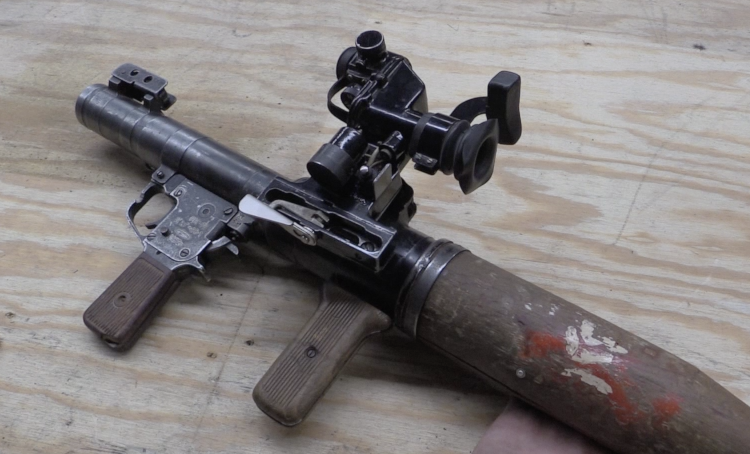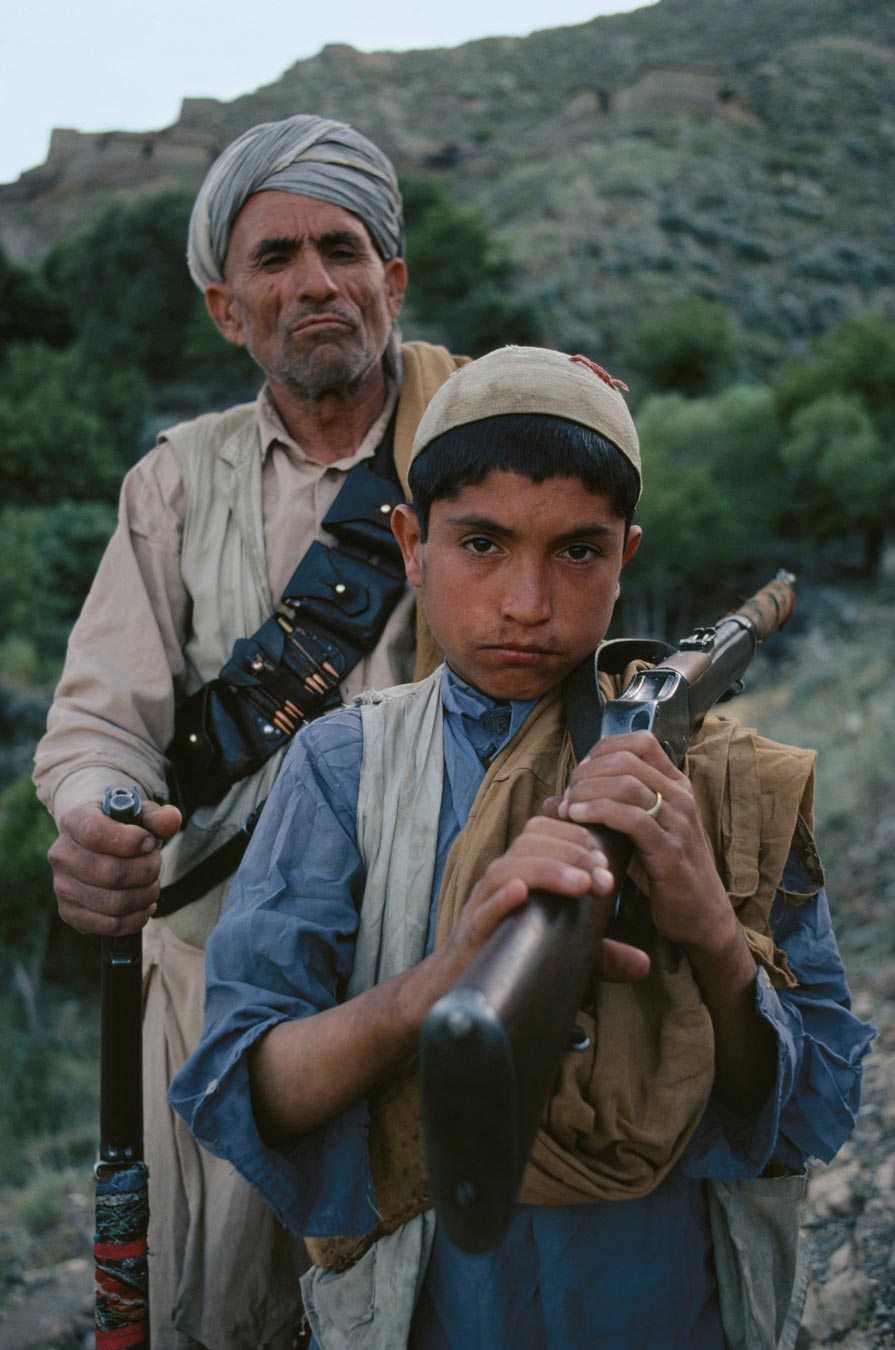https://www.rockislandauction.com/detail/1028/263
The Jezail is the traditional rifle of the Afghan tribal fighter, although it originated in Persia (Iran). Distinctive primarily for its uniquely curved style of buttstock, these rifles still maintain a symbolic importance although they are utterly obsolete.
Every jezail is a unique handmade weapon, but they all share some basic traits. They are typically built around complete lock assemblies, from captured guns or bought/traded parts. The barrel is typically quite long and rifled, and the caliber is generally .50 to .75 inch. Unlike the domestic American flintlock long rifles, the jezail is meant for war and not hunting.




Serriously tought that the yellow foam is corpse fat from some grave this rifle was dug out off.
Ian, the “decorative” lion is actually the logo of the British East India Company. The lock was likely reused from a broken/captured EIC-pattern musket.
Nice job! I always wondered about these pieces. I also liked the poem by Rudyard Kipling at the end.
I’m curious about the rifling – is it polygonal rifling instead of lands and grooves? And how is that made.
Also, a nit picky critique: Referring to the “middle east” when discussing Afghanistan is a bit off the mark.
I’m guessing hammer forged around a mandrel made of twisted hexagonal rod.
In one of the popular gun magazines there was an article by a man who had one of these rifles in shootable condition. The article said (roughly quote) “the rifled bore was not uniform but had tight and loose places along its length, Shooting at 50?yds. produced a group no better than a smooth bore musket.” The rifle’s reputation was made by that famous massacre of British troops “in the valley” being shot at my Afgans on the ridges where the volume of the cross fire did the British in. I wonder if the (imagined?) reputation for great accuracy is not simply the product of our love affair with the Jezail’s long barrel and its resemblance to that of the Pennsylvania rifle?
Historically, Muslims didn’t hunt wild game. What they can’t raise they steal from those they conquer. So they had little use for sporting arms.
Leaving aside the rudeness, Islam didn’t come from a place where there was much wild game- domestic animals and predators upon them mainly. Moslems have a rich tradition even in Arabia of falconry and hunting with trained prey animals. In the places that Moslems ruled that did have wild game- India, mainly- there was and is plenty of shooting thereof. Mainly with spears and arrows, because firearms were not very available, but game shooting there was. Here are some pictures- https://www.google.com/search?q=mughal+tiger+hunt&source=lnms&tbm=isch&sa=X&ved=0ahUKEwjfg7fqjvDRAhWBLSYKHSeBDvQQ_AUICCgB&biw=1046&bih=488Here's something one seldom sees- a film of Moslems hunting blackbuck with trained cheetahs in 1939.
Oops, here is the cheetah video. It’s still done, as is plenty of coursing with sight hounds.
https://www.youtube.com/watch?v=NevenDIp95A
Isn’t that the rifle used to wound Dr Watson? He did serve in Afghanistan prior to meeting Holmes…
Yes. According to A Study in Scarlet, the bullet hit him in the left shoulder, “shattering the bone and grazing the subclavian artery”.
To us forensic pathology types, that translates into plain English as it broke his clavicle (collarbone), punched through his scapula (shoulderblade), shattering both bones, and in the process nicked the left brachial artery right where it runs just under the collarbone on its way past the shoulder joint into the left arm.
Watson was lucky. A somewhat bigger “nick” in that artery and he could have bled to death before Murray, his orderly, could get him out of the scrum.
The bullet doesn’t even necessarily have to hit the artery. There’s more than enough bone in that area to be shattered by a bullet going through, which can cause secondary bone fragmentation that can shred the artery completely.
One of the big myths of Hollywood is that a bullet or other wound to the shoulder is “just a flesh wound”. Actually, it’s one of the most potentially lethal non-center torso/head hits there is. Another is a wound to the thigh. There are major arteries in both areas (brachial in the shoulder, femoral in the thigh/leg) that if ruptured, will cause fatal bleeding in under five minutes.
Note that the brachial artery is harder to stop bleeding in than the femoral artery in the thigh. It’s difficult to get a tourniquet on, direct pressure often won’t stop internal bleeding, and since it connects to the carotid artery in the neck that carries blood to the brain, it’s very easy to unintentionally shut off blood flow to the victim’s brain, with all the problems that can cause.
Murray must have been a first-class orderly, to be able to keep Watson alive with a wound like that.
For a movie that gets it right, see The Terror of the Tongs with Christopher Lee (Hammer Films, 1961). In it, when a boohow doy buries a hatchet in somebody’s neck or shoulder, the target is generally DAS; “Dead At Scene”, as we used to say. With more than enough blood showing to explain why.
cheers
eon
Original wording “subclavian artery” is more correct than “brachial artery”, because technically it’s not called a “brachial artillery” at that point.
A further note: only right subclavian artery has a common trunk with the (right) common carotid artery on people with the most common anatomical variant (there are surprisingly large individual variations even in arterial anatomy). Left common carotid artery connects directly to the aortic arch.
That buttstock is similar to something my brother kludged up when we we kids. He wanted to shoulder the rifle on his right shoulder and use his left eye. You would not want to shoot a flintlock lefty.
“utterly obsolete”
Notice that time stream has not exactly equal speed in every place on earth (Civilization video game is good example in that respect, when one player is technology-wise beyond other) – so if obsolete against enemy equipped with quick-firing cannons, it is still viable against same or worse equipped enemy.
See “Arithmetic on the Frontier” by Kipling. A British soldier with a Long Lee-Enfield isn’t worth 2X as much as an Afghan hill tribesman with jezail, it’s more like the square root of 2 as much, because one hit in the right place will kill him just as dead as it will the hill tribesman.
(h/t Steve Jackson)
cheers
eon
I was going to mention that Kipling poem!
I should point out that the jezail is not necessarily as old as the lock. The lock could have come from a much older firearm and was re-used later in the jezail.